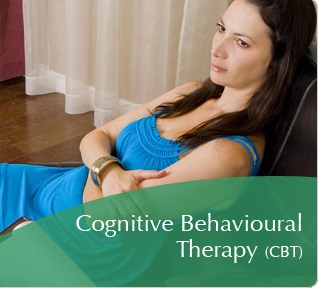Cognitive behavioural therapy (CBT) is a psychosocial intervention that is based on a combination of behavioural and cognitive psychology. It has its roots in the development of behaviour therapy in the 1920’s and the work of Aaron T. Beck in the 1960’s and 1970’s who founded a therapy that was structured and time limited. Beck’s therapy was devised for the treatment of depression as he noticed how often themes of loss, failure, worthlessness and rejection arose in the thinking of a depressed person. Up until this time, it was believed that negative thinking was due to some underlying biological or psychodynamic dilemma and when treated, the thoughts would get better. Beck’s understanding was somewhat different; he suggested that negative thinking could be a causal factor in depression.
Moreover, Beck also proposed that negative thoughts could maintain depression. Beck encouraged his clients to document these negative thoughts and bring them to therapy sessions so that they could be evaluated in terms of the evidence for and against the thought. In this way, thoughts were concepts that could be analysed and refuted if inaccurate. Clients were taught to be vigilant for long term beliefs and assumptions that might colour their mood. From a cognitive point of view, thoughts could therefore be monitored and challenged and alternative thoughts that are less likely to result in depression could be generated.
CBT is founded on the belief that it is distorted thoughts as well as maladaptive behaviours that contribute to the development and maintenance of psychological disorders. It is assumed that changing maladaptive thinking leads to changes in mood and behaviour. Some clinicians are more cognitively orientated while others are more behaviourally driven. From a behavioural perspective, interventions such as in vivo exposure therapy are sometimes used. This term refers to the process of directly confronting a feared situation, object or activity. For example, if someone has a fear of elevators, part of the treatment may be exposing the client in a graduated fashion to the experience of using an elevator. Similarly, if someone develops an association between anxiety and standing in line ups, part of the therapy will involve exposing the client to line ups so that they may confront their fear. Through exposure practice, the conditioning or association may become “unlearned” through the process of habituation and extinction.
CBT is an orientation that may involve multiple interventions including the development of adaptive coping strategies and skills, changing maladaptive beliefs, goal setting, relaxation, biofeedback, distraction, imagery and motivational self-talk. Treatment is time-limited and there is an emphasis on measuring changes in cognition and behavior and in the attainment of goals.
Cognitive Behavior Therapy NW Calgary
Research on CBT indicates that the treatment alone is effective for treating depression and anxiety, post traumatic stress disorder, tics, substance abuse, eating disorders and personality disorders. It is also recommended as a treatment in conjunction with medications for the treatment of obsessive compulsive disorder, severe major depression, opioid addiction, bipolar and psychotic disorders. As such, it is an effective evidence-based practice for treating psychological disorders. Unlike pharmacological treatments, CBT not only teaches skills and strategies that can be used to alleviate symptoms, it also helps to prevent the reoccurrence of symptoms. By contrast, when a person ceases the use of a medication and has not learnt skills to prevent symptoms, relapse can be a possible outcome.
For more information on CBT, please contact Abigail Draper PhD RPsych

